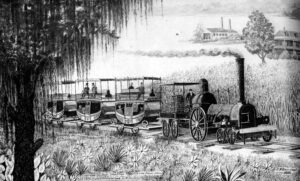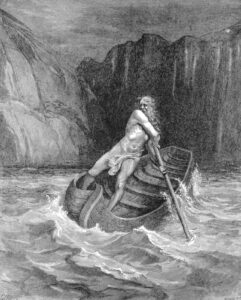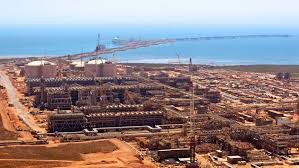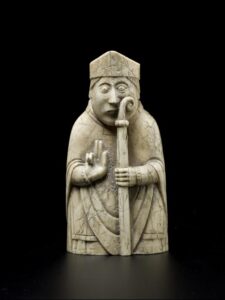 Last week, we received a circular from our local Council congratulating us on our performance in putting all our organic waste into the green bins provided. As a reward the Council delivered each household 75 compostable kitchen caddy liners free and told us that the emissions saved by our collective efforts were equivalent of taking 9,000 cars off the road for a year. The waste is commercially composted and not dumped in landfill, where it’s liable to emit methane and, according to the circular, methane is 28 times more potent than carbon dioxide. The compost produced is sent to “Aussie farmers” apparently.
Last week, we received a circular from our local Council congratulating us on our performance in putting all our organic waste into the green bins provided. As a reward the Council delivered each household 75 compostable kitchen caddy liners free and told us that the emissions saved by our collective efforts were equivalent of taking 9,000 cars off the road for a year. The waste is commercially composted and not dumped in landfill, where it’s liable to emit methane and, according to the circular, methane is 28 times more potent than carbon dioxide. The compost produced is sent to “Aussie farmers” apparently.
It is ironic that this is occurring in the electorate of a Prime Minister who is providing a huge subsidy to the fossil fuel industry so they can export all our national resources, under the American flag, predominantly to Japan and in so doing pouring carbon dioxide into the atmosphere. It would be ironic for him to save Western Australian seats only to lose his own to the Greens. Fanciful, but some must be thinking about it given his flagging popularity and the raw deal NSW is getting with the GST carve-up.
The prospect of climate change at times excites people and the accompanying evangelism for reducing the emissions rises in the community. As reported above, the activism continues at the community level, but in the various Parliaments the well-moneyed lobbyists are constantly interfering in the process of Planet survival.
Even though the images of climate excesses are thrust in front of our eyes, replete with data the community, unless prompted by exercises as described above, seems to accept increased global warming, its causes and solution are too complicated to contemplate. As a result, the populace stops listening to the bombardment of doomsday data.
Nevertheless, there will be a tipping point. The actual point is a matter for speculation. Western eyes tend to discount the extreme consequences occurring in areas of the Planet where the skin of the people is not predominantly white.
Yet one consequence of climate change is rising sea levels and storms of greater intensity, so that previously valuable real estate is being eroded, as shown in the image above where houses are being washed away along the New England Coast into the Atlantic Ocean. The number of trophy houses built with ocean views that now lie as flotsam and jetsam is increasing. Whether the receding beachlines will galvanise the wealthy influential is doubtful, hoping that short term solutions of setting up rock or cement walls are built to delay the inevitable. More likely, those who want water views will seek sites which are the most resistant to the changes in the ocean storm intensity, and high enough to be above water levels to survive if the Antarctic totally melts away. Whaddya talking about, you climatic change Jeremiah?
We humans contribute to all this disaster by draining wetlands, building on floodplains, destroying mangroves and coral reefs and imposing ineffective solutions. Yet some defences have been effective if monitored closely.. Well before climate change was on the agenda, the Netherlands was considered vulnerable as much of the country is below sea level. After the disastrous flood in 1953, the Netherlands government built a highly sophisticated system of dykes to protect this seafaring nation constructed on the sandy knolls of the Rhine delta.
As one commentator has written: “Many point to the Dutch as an example of how cities can survive well below sea level and this would work with New Orleans except they suffer from large hurricanes while the Netherlands does not. With hurricane intensity increasing due to climate change and the natural swamp barrier eroding away, New Orleans will eventually have no protection outside the levees. That comment will hold for all the settlements along the Gulf of Mexico coast. Once, there was a “highway” on which we travelled between the township of Sabine Pass and Galveston in the early 1990s. This road now no longer exists, having been washed away years ago.
To me the problem is very clear, the Planet is warming with a rise in the level of oceans inevitable but unpredictable given the increased prevalence of extreme weather. Flood, fire, pestilence and drought are all companions to the destruction of us humans, who will increasingly huddle in a World which we can no longer afford to repair – at least without any sense of equity. It will be impossible to insure properties – and not just those in the immediate path of the impact of climate change, but all properties will see massive increases in insurance cost as reinsurers spread the pain. This may become one driver in this increasingly dystopian world to do something. Maybe though, in this new reality we will just retreat into isolated fortified communities, an ultimate resultant of Trump’s mantra of “Make America Great.”
The problem is that denial still rages through certain sections of society. There is the semantic difference of whether climate change has been caused by humans or whether it is normal part of an intrinsic weather cycle of a planet naturally warming and cooling. Whatever the cause, our Planet is warming, and I prefer that the explanation is our fault and therefore potentially correctable by a collective change in human behaviour.
Therein lies the problem. Humans are divided into tribes, and it seems that the closer the tribes are, the more they tend to end up in conflict. One of the ways civilisation provides the chimera of change is to have forums – talk-fests every few years – where promises are cheap and the problem is just rolled down the road.
Now the world is in conflict in Ukraine, Israel and the Sudan as major focal points, these are inimitable to a response which requires a global co-ordinated effort. Conflict waged by old men who will never see the results of their handiwork makes it impossible. Added to that is we live in a world seduced by the quick solutions with the least interruption to our lifestyle. All renewable energy sources, once widely praised, are now being sowed with seeds of discontent as proponents of fossil fuel, led by the natural gas industry which seek to maintain their position. When the debate just becomes noise, then confusion reigns at home.
We maintain the status quo. It is not just inertia; it is the sense of knowing what you have been accustomed to in keeping warm, keeping cool, being able to determine how you travel, what food to consume – all defining comfort and shutting out uncertainty, which is really the definition of the future.
 I grew up with wood fires, gas cooking and inefficient electrical appliances. We had fires in winter, because we still had fireplaces, but our chimney has been capped, and we have not had an open fire for over 20 years. We toyed with replacing that with gas heating, which we never did, but now we are about to install air conditioning. We still cook with gas, as we cooked with when I was a child. What is the incentive to change, given that a switch will entail a significant cost in installing the required connection in an old terrace house. We have not placed solar panels on our roof, even though we have discussed doing it. It is not only cost but also priority.
I grew up with wood fires, gas cooking and inefficient electrical appliances. We had fires in winter, because we still had fireplaces, but our chimney has been capped, and we have not had an open fire for over 20 years. We toyed with replacing that with gas heating, which we never did, but now we are about to install air conditioning. We still cook with gas, as we cooked with when I was a child. What is the incentive to change, given that a switch will entail a significant cost in installing the required connection in an old terrace house. We have not placed solar panels on our roof, even though we have discussed doing it. It is not only cost but also priority.
Without government wholehearted intervention, it rests solely with the household, and in the case mentioned above local council support for positive change. However, at the same time, being in a heritage area limits the utility of solar panel output. But what then when electoral survival is more important than planetary survival? Yes, it a matter of priorities. In the end to the detriment of The Planet, we have suffered from a malignant form of inertia, which we should correct before it will not matter – our house having been consumed by some unusual weather event.
As an epilogue to what I have written above, I must acknowledge after I had completed this blog item, a speech by the UN Secretary General, António Guterres. In his speech in New York he added his dire foreboding in the face of May 2024 being the hottest on record for that month plus other data forecasting of the future destination of Earth. He urged that there be a global ban on fossil fuel advertising. He did not completely abandon that the rise in the planetary temperature by 1.5oc can be met.
In response, a representative of the fossil fuel industry said blandly, “Our industry is focused on continuing to produce affordable, reliable energy while tackling the climate challenge, and any allegations to the contrary are false.”
There you are. Nothing to see here. Now what is that wall of water coming towards my plush office across the New York skyline. As you said, nothing to see.
A Powerhouse Food
I like tapioca. I remember it was called “frogs eggs” when I was a kid and also remember that it was not the most popular dessert.
However, reading the Washington Post, I came across a fascinating backstory of the plant from which tapioca was one product. Australians never think about cassava (also known as manioc or yuca); most Australians have never heard of it, but the article in the Washington Post is worth airing across the widest audience possible.
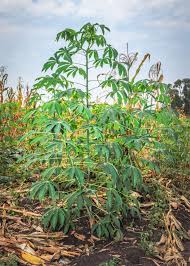 From Amazonia came cassava at the time when the hunter gatherer society was giving way to the agricultural revolution – as paraphrased from the Washington Post. (It was a) trade off between calories used up for hunting against staying at home and growing edible products, gradually improving the productivity of them.
From Amazonia came cassava at the time when the hunter gatherer society was giving way to the agricultural revolution – as paraphrased from the Washington Post. (It was a) trade off between calories used up for hunting against staying at home and growing edible products, gradually improving the productivity of them.
Sometimes the most obvious truism has missed me. Once humans were able to form settlements, then that was beginning of having periods of rest instead of all the waking hours being spent hunting for food. Once humans started growing crops then the quality and quantity of edible plants improved as well as enhancing the concept of us humans working but also having downtime together.
Cassava was one such plant which spread from Amazonia to as far away as Panama within a few thousand years. It reduced the load of searching the forests in search of food. Today it is the staple diet of 600 million people, but what happens when it’s eaten raw?
 Even though it became a staple food, when raw, it is toxic. This toxicity gave the plant pest resistance and herbivorous animals shied away from eating it. In technical terms, when cassava’s cells are damaged, by chewing or crushing, for instance, the linamarin and linamarase react, releasing a burst of noxious chemicals. One of them is cyanide gas. The burst contains other nasty substances as well, including nitriles and cyanohydrins. Large doses of them are lethal.
Even though it became a staple food, when raw, it is toxic. This toxicity gave the plant pest resistance and herbivorous animals shied away from eating it. In technical terms, when cassava’s cells are damaged, by chewing or crushing, for instance, the linamarin and linamarase react, releasing a burst of noxious chemicals. One of them is cyanide gas. The burst contains other nasty substances as well, including nitriles and cyanohydrins. Large doses of them are lethal.
There are also two longer term diseases. One is konzo, first described in the Congo in 1938, which affects motor neurons, and leads to abrupt onset over hours or days of permanent but non-progressive spastic paralysis of the legs.
The second, tropical ataxic neuropathy, first described in Jamaica in 1897 is a syndrome of bilateral optic atrophy, bilateral sensory neural deafness, predominant posterior column involvement and pyramidal tract myelopathy, with ataxic polyneuropathy. It is cassava-associated through its toxic nitrile component.
Undoubtedly, these diseases were there when cassava was first grown, harvested and eaten. It was human endeavour, which resulted in a toxic plant being converted into a staple of the Amazonian diet. This would have been done by trial and error and is part of the capacity that we, as homo sapiens, have in being able to experiment and come to an understanding about how to use a plant so that the cropping, in this instance, was not abandoned.
Today, almost every rural family across the Amazon has a garden where one will find cassava roasting on the fire, being toasted into a flatbread called casabe, fermenting into the beer called masato, and made into soups and stews.
The ancient Amazonians devised a complex, multistep process of detoxification that transforms cassava from inedible to edible.
The process begins with grinding cassava’s starchy roots and shredding so that the toxic cyanide gases drift into the air, not into the lungs and stomach if they are eaten.
Next, the shredded cassava is rinsed, squeezed by hand and drained repeatedly, the action of the water releases more cyanide, nitriles and cyanohydrins, and the squeezing rinses them away.
Finally, the detoxification is completed with the resulting pulp being dried or cooked. These steps are so effective that they are still used throughout the Amazon today.
The Amazonians pushed their efforts even further, inventing new methods for processing cassava, keeping track and selectively growing varieties with desirable characteristics, gradually producing a constellation of types used for different purposes.
When this process is not followed as has occurred elsewhere over the thousands of years it has spread to the Caribbean, Asia and Africa, where the pathology has been described and the association made with cassava toxins.
Nevertheless, The Washington Post article reminded me that there are crops below my Western horizon, which should be promoted given that the climate is changing and the more resistant the plant is to the vagaries of such changes the better. The only caveat is when uninformed farmers try to avoid the purification, the consequences as outlined occur to their families. The challenge is clear, to provide worldwide the crop where the toxins have been bred out, leaving a crop to counter starvation in an unstable planet.
Shut the Gait
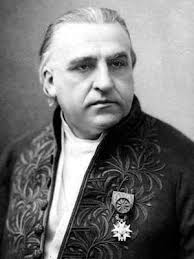
It’s all in the gait. Biden because of his apparent incipient Parkinsonism walks with that cog wheel rigidity. If the Democrats had consulted any neurologists, I’m sure that many of them would say he has next to no chance of lasting another four years. It is just ludicrous. The reason for his gait is attributed to peripheral neuritis. I have severe peripheral neuritis and he does not conform to my gait or that described by the French neurologist and ‘father’ of neurology, Charcot, when he was disturbed stamping feet of the patients in the ward above his office. That was the gait of the syphilitic tabetic where peripheral neuritis was a major symptom (which incidentally is not my cause).
Whereas Trump has a seemingly more normal gait, in that he does not shuffle, but it’s slower than it was. His problem is his fronto-temporal dementia, and the key word is “dementia”. At his age, the aggression caused by the dementia is misinterpreted by his supporters as hilarious and a sign that The Icon is still in full control. Forget the slurred jumbled syntax and the periods where he does not speak while the brain tries to get back in gear. As I have mentioned before, much would be resolved if they would both take independently and publicly a test of their cognitive ability. Except, Trump would inevitably bleat that it was “rigged”.
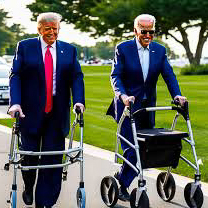
These are old men, and while Trump is two years short of 80, he acts as one. One only has to look at him in 2016 and now to see the decay. The peau d’orange skin is far more pitted with age. It is easy to say that neither will go the distance for another four years, but neither side is willing to say this.
There is the Ratzinger solution – that is, to prop up a clearly vegetative person in all the robes of office and wheel him around denying what’s obvious. This Cardinal Ratzinger, his eventual successor, did propping Pope John Paul II up and making all the decisions until the Pope’s demise in 2005 at the age 84. Then he had the votes and became the next Pope, Benedict XVI. He was then 78 years old, Trump’s age now, but in a far better scheming mental condition.
This lesson has obviously not been lost on a group of Trump’s consigliere, but the consequences of his conviction for a felony in New York has yet to be played out. However, his only response has been his perpetual ranting against the rule of law and some delusion of himself as a dictator ensconced in his cocoon of irrationality, with images of Putin drifting through his cerebral decay.
But like all old men where illusion and delusion collide, Trump strides ponderously, a golden mane of baldness, a well-tailored corpulence and built-up shoes. After all, it is all in the gait.
A further thought bubble
As a footnote to the above, with two old men lurching towards their final curtain, the choice of Vice-President becomes crucial. Biden, like one of his predecessors, Lyndon Johnson, is a creature of the US Senate, deal makers where consensus and compromise was the “bread and butter” but two men unused to conflict where leadership is paramount. Winston Churchill was a failure in the polite gentlemanly etiquette in the world of consensus, but he perceived the retention of democracy under extreme threat against unbridled dictatorship and this was the essence of his great leadership. Churchill needed a Hitler to demonstrate his greatness. Biden by contrast seems wanting in the face of Trump, but here’s hoping.
Biden has Trump, a dictator in the wings who has revealed what he wants to do by his January 6 attempted “putsch”. The trouble that Trump projects is that of inchoate civil disorder to propel him into being President. Yet he has no planning skills, only the skills of a small town grifter cushioned by the original substantial inheritance from “daddy” to hide his deficiencies.
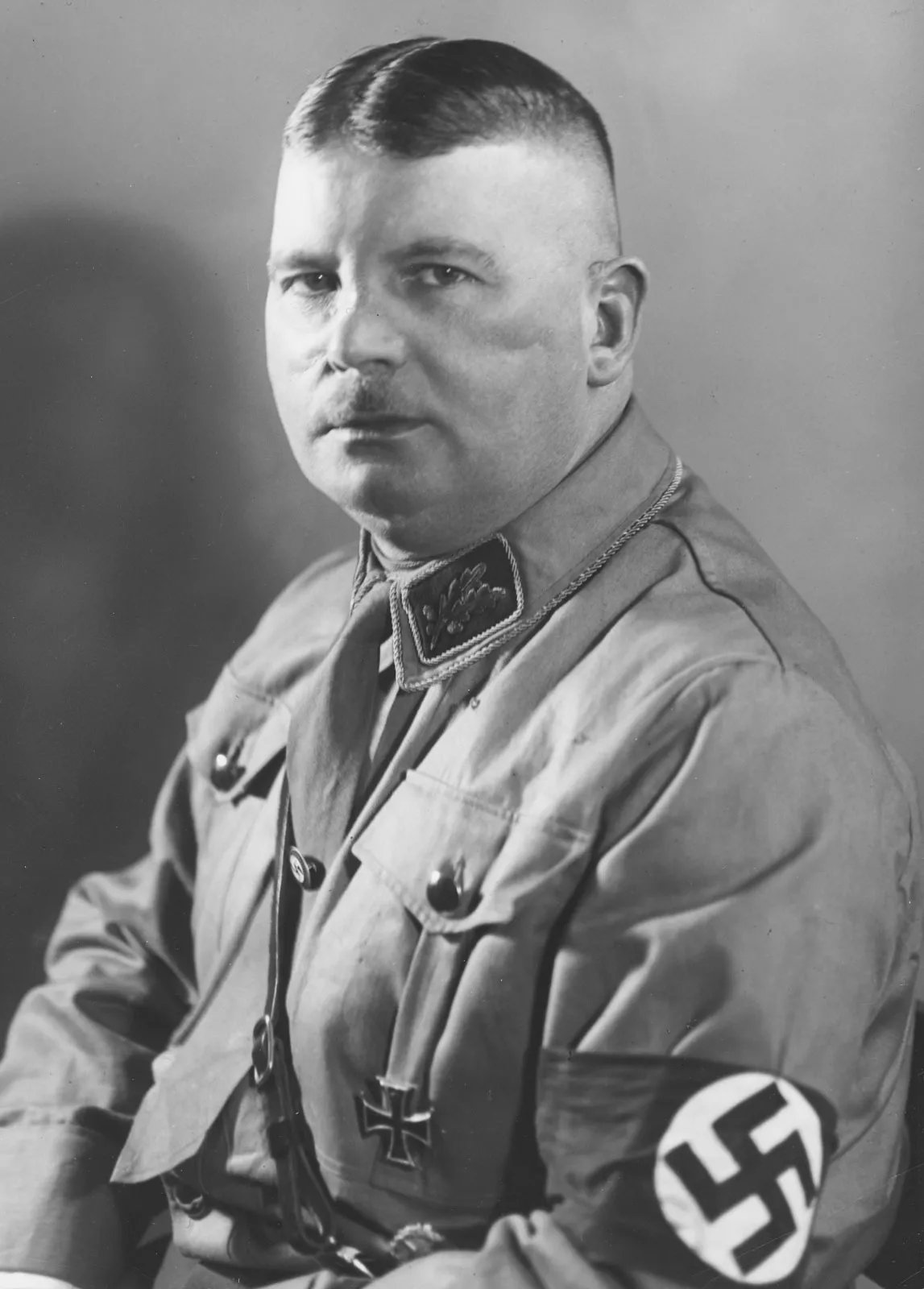
Hitler had Ernst Röhm, who organised the Sturmabteilung (SA), the Nazi Party’s original paramilitary strike force, to spread fear and brutality with persecution of selected minorities, Jews, Romany, homosexuals and the disabled. Hitler, after falling out with Röhm, called him back from his advisor role to the Bolivian Army. Later Hitler had him executed in the Night of the Long Knives.
Sounds familiar (perhaps except for the last sentence) in the context of the Trump choice for Vice-President. The Trump dilemma is to choose a Vice-Presidential running mate with a clear differentiation from Trump, a person who will not frighten the electorate and yet a person to organise his militia (an essential ingredient for the dictatorship which he craves).

Biden has as his Vice-President, Kamala Harris, a woman of colour, who had a distinguished legal career and then was US Senator for California. She has been significantly underwhelming as Vice-President, having a very low rating with the electorate. The reasons for this are attributed to a misogynistic electorate and the fact that she is a woman – and of colour.
Nevertheless, reading the comments, she has a personality which in Australian terms is that of a “bucket of gravel”; and whether Biden’s level of popularity has dragged her down or vice versa is a moot point. The cruellest point made against her is that she is more show pony rather than work horse. She would not be the first to be called that – and that is true irrespective of gender.
Still, she is next in line as Vice-President in the event of Biden being re-elected and then not lasting the four years. She has already served as Acting President for an hour while the President was having a colonoscopy.
Mouse Whisper
She was reflecting looking out on a rainy day. “You know”, she said “AI could never have written the Gettysburg address.” Just as succinct to show brevity has a certain force, whereas AI would reflect the loquacious, bland self-importance so prevalent in our Society. But if AI advances, perhaps as a positive response, the public relations industry will gradually fade away. We mice can only hope.


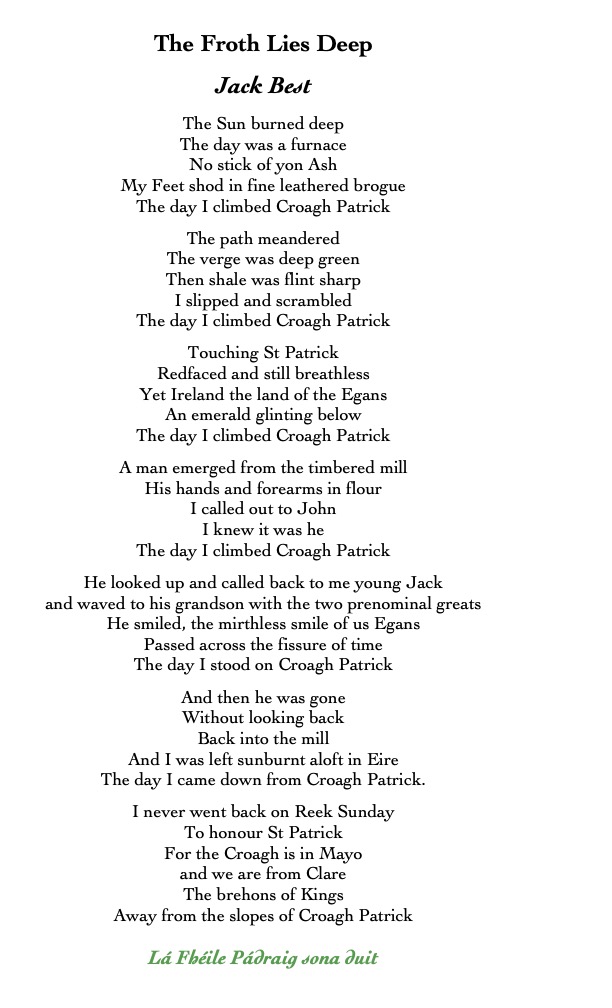
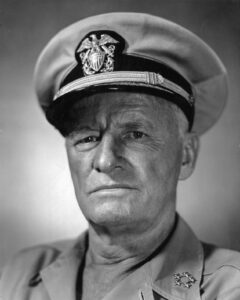
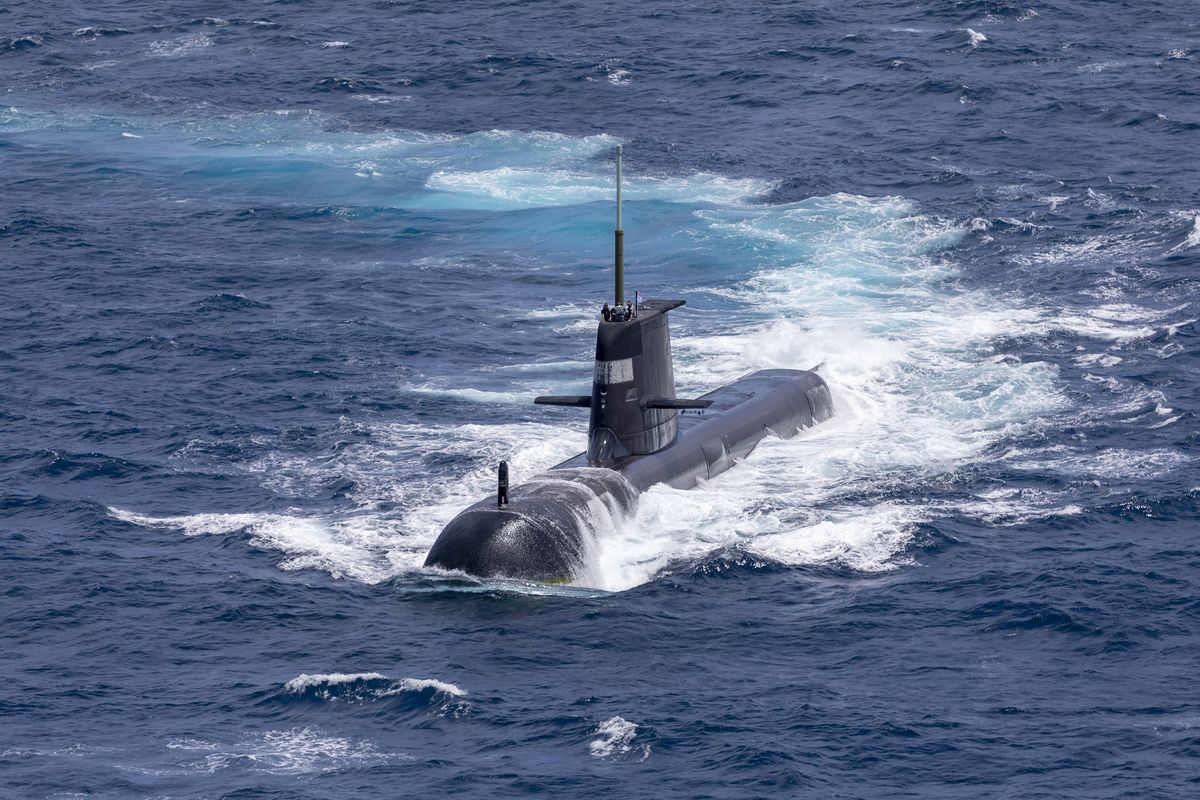
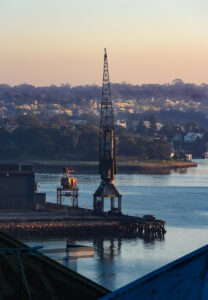

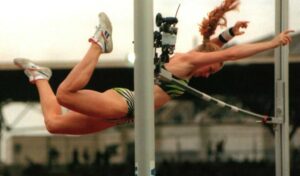
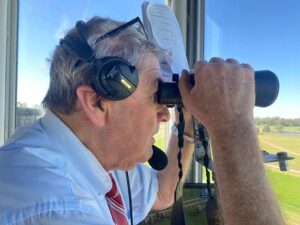
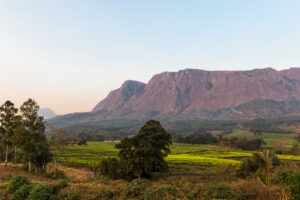
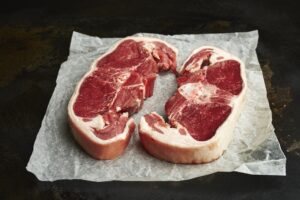
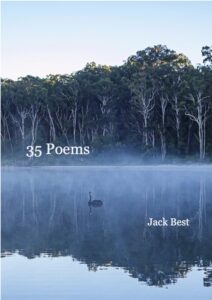
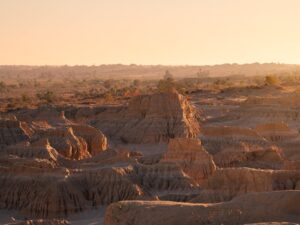
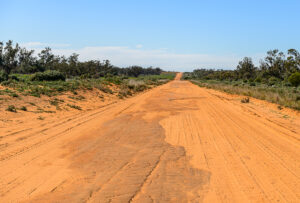
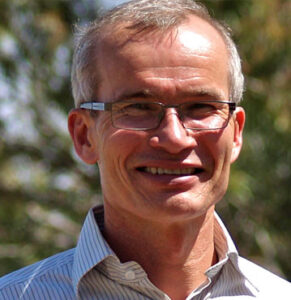
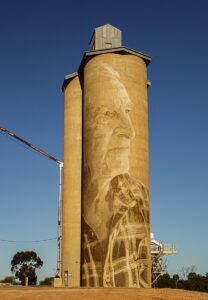
 Jane Halton has bobbed up again. The incoming Health Minister, Mark Butler, has asked her to review the existing vaccine contracts and whether the country had a regular source of vaccine supply – a guaranteed pipeline.
Jane Halton has bobbed up again. The incoming Health Minister, Mark Butler, has asked her to review the existing vaccine contracts and whether the country had a regular source of vaccine supply – a guaranteed pipeline.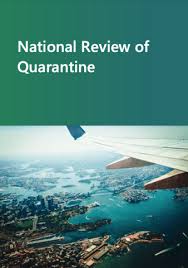 She became a member of the ill-fated Executive Board of the Australian National COVID-19 Coordination Commission in March 2020. That would suggest that she was engaged in the whole sorry process from the start, the entrails of which she has been asked to examine. Maybe she will be able to airbrush any involvement of Sarah Jane Halton from her report to Minister Butler.
She became a member of the ill-fated Executive Board of the Australian National COVID-19 Coordination Commission in March 2020. That would suggest that she was engaged in the whole sorry process from the start, the entrails of which she has been asked to examine. Maybe she will be able to airbrush any involvement of Sarah Jane Halton from her report to Minister Butler.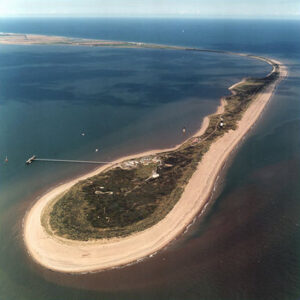
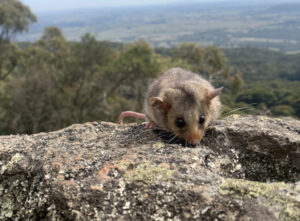 My Bushrat relative, Rafferty, turned up the other day. He had hitched a ride on a number of trucks around the southern part of the Far West of NSW with a mate, Jack Kerourat. Anyway, he said that the Hay Plain was so flat you could see the curvature of the Earth’s surface.
My Bushrat relative, Rafferty, turned up the other day. He had hitched a ride on a number of trucks around the southern part of the Far West of NSW with a mate, Jack Kerourat. Anyway, he said that the Hay Plain was so flat you could see the curvature of the Earth’s surface.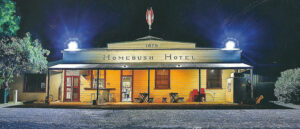
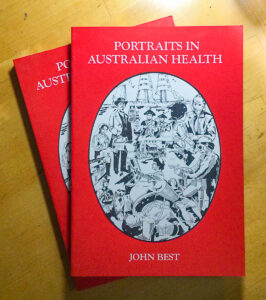 I have written this story before, but the proposal to increase the travel allowances of patients living in country areas of NSW reminds me of a story which appeared in my 1988 book “Portraits in Australian Health” released in the Bicentenary year, to my knowledge the only book which the Federal Department of Community Services and Health sponsored to honour this occasion.
I have written this story before, but the proposal to increase the travel allowances of patients living in country areas of NSW reminds me of a story which appeared in my 1988 book “Portraits in Australian Health” released in the Bicentenary year, to my knowledge the only book which the Federal Department of Community Services and Health sponsored to honour this occasion.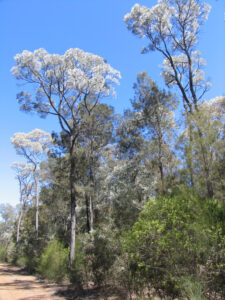
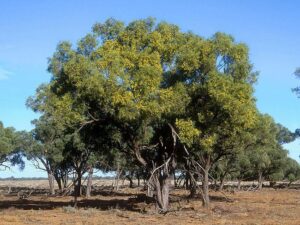
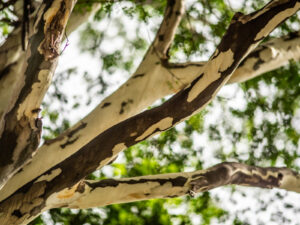
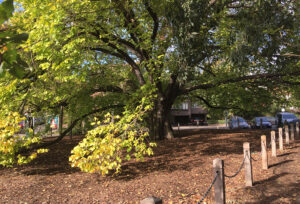 The amazing element which I found as I entered the dense canopy, seeking an unmarked specimen of leaf, at a time when I was collecting the various glabrous leaves of these trees, was that when you were under the canopy your vision was only of the foliage. The outside world was blotted out. Branches nearly touch the ground, and others are propped up. Here, there was a tranquillity, and even though close by, the traffic noise was muted, although the smell of the dusty, dirty city does penetrate through the foliage.
The amazing element which I found as I entered the dense canopy, seeking an unmarked specimen of leaf, at a time when I was collecting the various glabrous leaves of these trees, was that when you were under the canopy your vision was only of the foliage. The outside world was blotted out. Branches nearly touch the ground, and others are propped up. Here, there was a tranquillity, and even though close by, the traffic noise was muted, although the smell of the dusty, dirty city does penetrate through the foliage.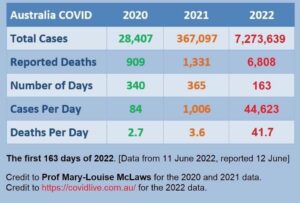
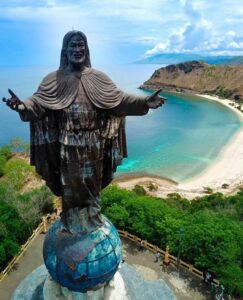

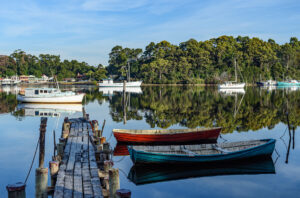
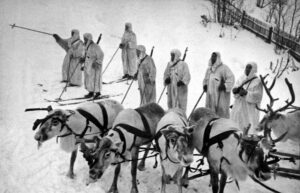
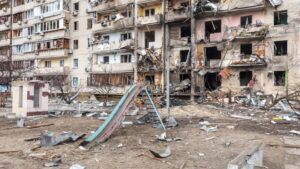
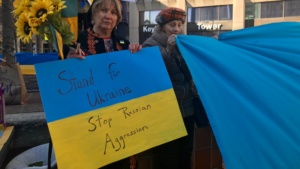
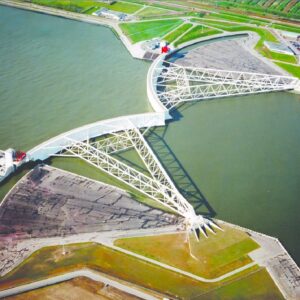
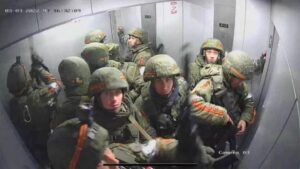
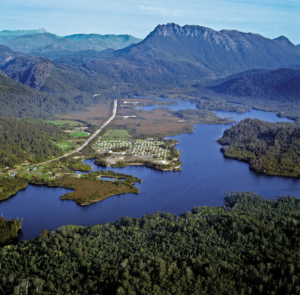
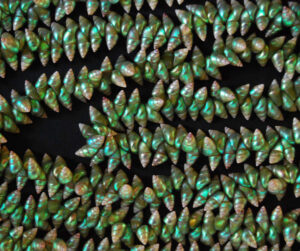
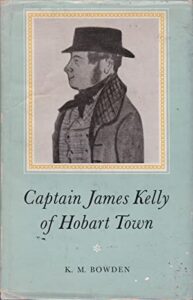 The description of female sealing in the Bass Strait islands is a prime example. No mention of herbs and spices in cooking the young seal. Having personally been one of those who have tasted seal, I would suggest it is not among my top ten gustatory phenomena.
The description of female sealing in the Bass Strait islands is a prime example. No mention of herbs and spices in cooking the young seal. Having personally been one of those who have tasted seal, I would suggest it is not among my top ten gustatory phenomena.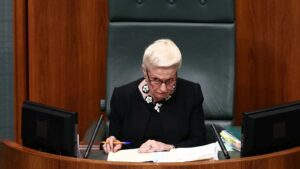
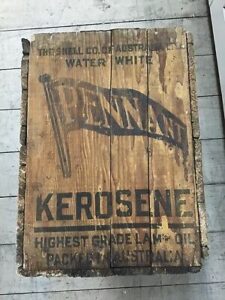
 Some nursing homes are attached to the public hospital. Therefore, I was in a position to influence the rules for visiting doctors. My initial approach was to look at the drug charts of each resident as this gives one an idea of how often the resident is reviewed by a doctor. The need for documentation is as essential as regular visits by the local general practitioner, and each nursing home should have access to a consultant geriatrician or specialist in rehabilitation medicine (and ensure one or the other visits regularly).
Some nursing homes are attached to the public hospital. Therefore, I was in a position to influence the rules for visiting doctors. My initial approach was to look at the drug charts of each resident as this gives one an idea of how often the resident is reviewed by a doctor. The need for documentation is as essential as regular visits by the local general practitioner, and each nursing home should have access to a consultant geriatrician or specialist in rehabilitation medicine (and ensure one or the other visits regularly).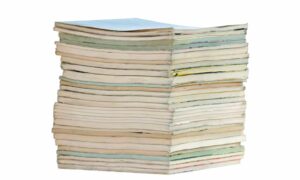 Government falls down in the implementation. Many of the ministers and the bureaucrats think that fussing over the nature of enquiry is enough, and unfortunately too much of the intellectual capital is invested in the initial enquiry and its report. In fact, the report is only the start; but too often it is the end point, gathering dust with so many others.
Government falls down in the implementation. Many of the ministers and the bureaucrats think that fussing over the nature of enquiry is enough, and unfortunately too much of the intellectual capital is invested in the initial enquiry and its report. In fact, the report is only the start; but too often it is the end point, gathering dust with so many others.
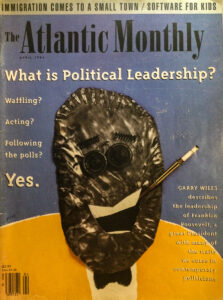 In 1994, I bought the April edition of the Atlantic Monthly because it had an article entitled “What is Political Leadership?” The author was Garry Wills, a conservative Catholic historian, with whom I had become acquainted through reading his book reviews in the New York Review of Books. Increasingly he has taken positions in relation to civil rights and then Vietnam which, in conventional terms, would seem to belie his conservative Catholic stance, especially given William Buckley was an early mentor. However, to be socially progressive is not incompatible with conservatism.
In 1994, I bought the April edition of the Atlantic Monthly because it had an article entitled “What is Political Leadership?” The author was Garry Wills, a conservative Catholic historian, with whom I had become acquainted through reading his book reviews in the New York Review of Books. Increasingly he has taken positions in relation to civil rights and then Vietnam which, in conventional terms, would seem to belie his conservative Catholic stance, especially given William Buckley was an early mentor. However, to be socially progressive is not incompatible with conservatism.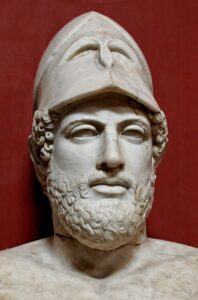
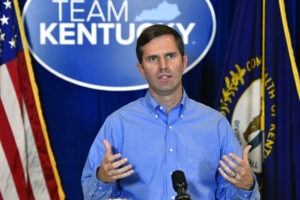
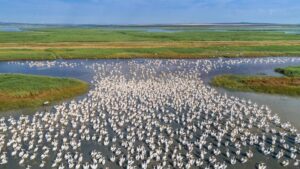
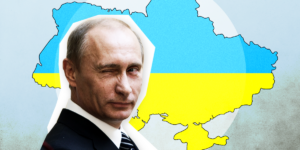 Thus, the assumption is that the Russian-speaking areas of Ukraine would be attracted to Putin. In Ukraine these speakers constitute 30 per cent of the population and, as would be expected, the area where Russian is least spoken lies along the western border area, with its history of Hapsburg rule. Nevertheless, the linguistic division is not sharp, and often Ukrainians use both Russian and Ukrainian in conversation, even within the one sentence. In contrast there has been a marked change in national sentiment with the pro-Soviet President, Viktor Yanukovych and his cronies being ousted in 2014.
Thus, the assumption is that the Russian-speaking areas of Ukraine would be attracted to Putin. In Ukraine these speakers constitute 30 per cent of the population and, as would be expected, the area where Russian is least spoken lies along the western border area, with its history of Hapsburg rule. Nevertheless, the linguistic division is not sharp, and often Ukrainians use both Russian and Ukrainian in conversation, even within the one sentence. In contrast there has been a marked change in national sentiment with the pro-Soviet President, Viktor Yanukovych and his cronies being ousted in 2014.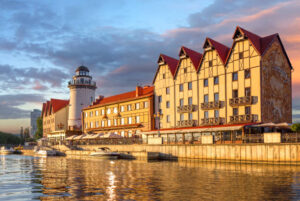
 I wonder how many elderly or disabled people who fall require assistance to get off the ground or floor. Over two hours of smelling the carpet is not the best fragrance. The NSW Ambulance service averages about 25 minutes for an inner suburban urgent call. But not mine; the ambulance was based in Paddington (7.8 kilometres or 14 minutes) from my home.
I wonder how many elderly or disabled people who fall require assistance to get off the ground or floor. Over two hours of smelling the carpet is not the best fragrance. The NSW Ambulance service averages about 25 minutes for an inner suburban urgent call. But not mine; the ambulance was based in Paddington (7.8 kilometres or 14 minutes) from my home.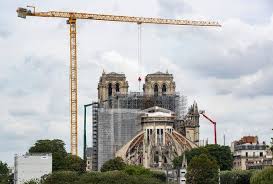 Cathedral restorers hope to collaborate with the Louvre for the restoration of “the Mays,” 76 large paintings of the Acts of the Apostles donated between 1630 and 1707 by Parisian goldsmiths. Today, some are randomly placed in the side chapels and others are in museums. The plan would return them to the nave, so that visitors would see the witness of the apostles lining the main axis of the church.
Cathedral restorers hope to collaborate with the Louvre for the restoration of “the Mays,” 76 large paintings of the Acts of the Apostles donated between 1630 and 1707 by Parisian goldsmiths. Today, some are randomly placed in the side chapels and others are in museums. The plan would return them to the nave, so that visitors would see the witness of the apostles lining the main axis of the church.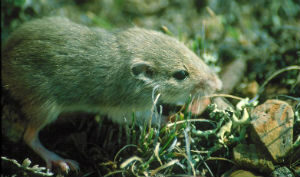
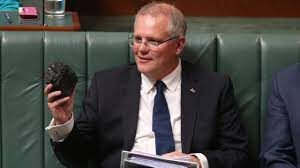
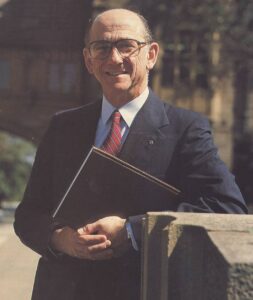 George died a week ago at 3.30pm. He was 93, and thus he had a life well lived. He was a Russian émigré from Shanghai, whose family started Repin’s coffee inns in Sydney in 1930. These were very successful, and the name Repin became a household name for a place to have a cup of tea as well as coffee. During the Depression, hard-up businessmen used the coffee shops to run their ailing businesses. American servicemen during WWII, unused to tea, found access to coffee through Repin’s – a boon. Repin’s in the fifties were the places the Push literati frequented in the afternoon to discuss how many angels were on certain pinheads.
George died a week ago at 3.30pm. He was 93, and thus he had a life well lived. He was a Russian émigré from Shanghai, whose family started Repin’s coffee inns in Sydney in 1930. These were very successful, and the name Repin became a household name for a place to have a cup of tea as well as coffee. During the Depression, hard-up businessmen used the coffee shops to run their ailing businesses. American servicemen during WWII, unused to tea, found access to coffee through Repin’s – a boon. Repin’s in the fifties were the places the Push literati frequented in the afternoon to discuss how many angels were on certain pinheads.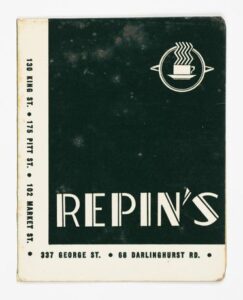 After the family coffee business closed in 1966, George joined the AMA and after a period became Secretary General, just in time for the negotiations to commence on the shape of the health care system following the report of the Nimmo Inquiry in 1969. The Ludecke Inquiry was where George became blooded in dealing with the Federal Government. Then the Whitlam government came to power in 1972, with its stated intent of introducing a universal health scheme.
After the family coffee business closed in 1966, George joined the AMA and after a period became Secretary General, just in time for the negotiations to commence on the shape of the health care system following the report of the Nimmo Inquiry in 1969. The Ludecke Inquiry was where George became blooded in dealing with the Federal Government. Then the Whitlam government came to power in 1972, with its stated intent of introducing a universal health scheme.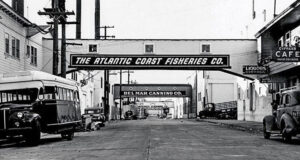
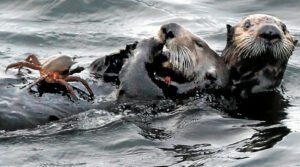
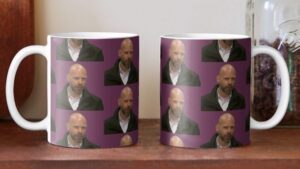
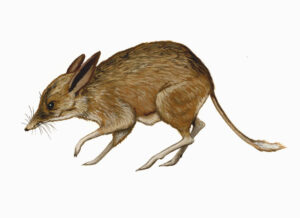
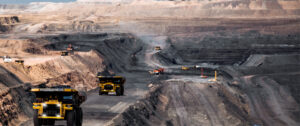

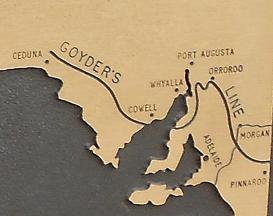
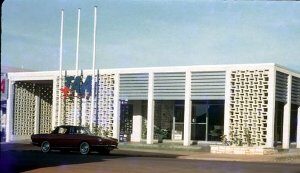
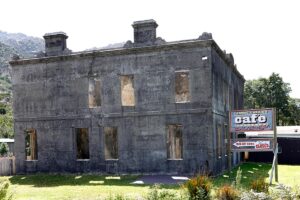
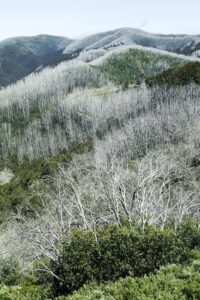
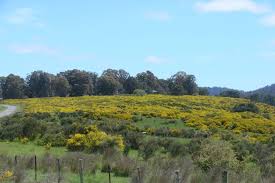

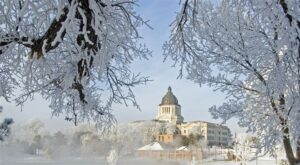
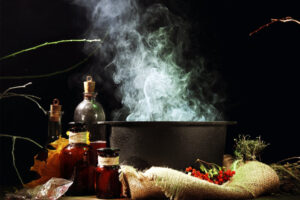 Fillet of a fenny snake;
In the cauldron boil and bake;
Eye of newt and toe of frog,
Wool of bat and tongue of dog,
Adder's fork and blind-worm’s sting,
Lizard's leg and howlet's wing,
For a charm of powerful trouble,
Like a hell-broth boil and bubble.
Fillet of a fenny snake;
In the cauldron boil and bake;
Eye of newt and toe of frog,
Wool of bat and tongue of dog,
Adder's fork and blind-worm’s sting,
Lizard's leg and howlet's wing,
For a charm of powerful trouble,
Like a hell-broth boil and bubble.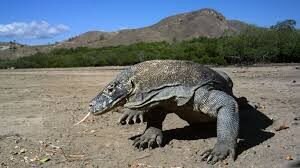 Zigzagging all across the landscape, he knows that the media are fascinated by his serpentine movements. The media is the helpless rodent in front of the snake, mesmerised by these movements. Perhaps more the Komodo dragon rather than snake, given that saliva is the medium for contagion, and that saliva is an ooze coating his White Burrow. So beware the Kiss of the Komodo, Ivanka.
Zigzagging all across the landscape, he knows that the media are fascinated by his serpentine movements. The media is the helpless rodent in front of the snake, mesmerised by these movements. Perhaps more the Komodo dragon rather than snake, given that saliva is the medium for contagion, and that saliva is an ooze coating his White Burrow. So beware the Kiss of the Komodo, Ivanka.